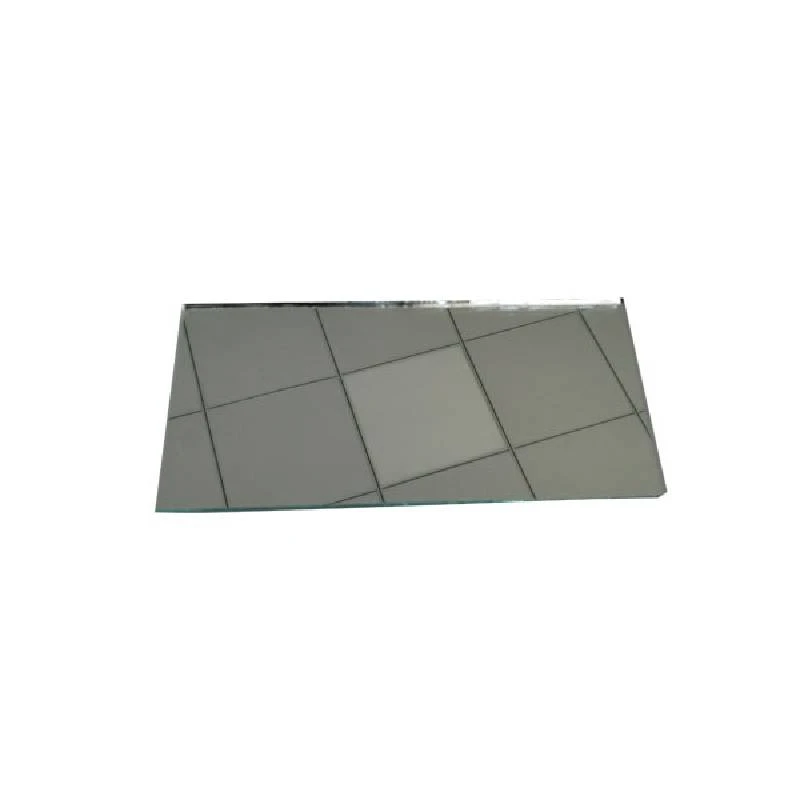The Evolution and Applications of Float Annealed Glass
Float annealed glass, a crucial component in modern architecture and design, has revolutionized the way we interact with light and space in our environment. This type of glass is produced through a unique manufacturing process known as the float process, which was first developed in the 1950s. Its clarity, durability, and aesthetic appeal have made it a popular choice across various industries, from construction to automotive applications.
What is Float Annealed Glass?
Float glass is created by floating molten glass on top of molten tin. This results in a sheet of glass that is uniform in thickness and perfectly flat. The term annealed refers to the process of slowly cooling the glass after it has been formed, which alleviates internal stresses. This careful control of the cooling process enhances the strength and stability of the glass, making it less prone to breakage and distortion.
The Manufacturing Process
The float glass process begins with silica sand, sodium carbonate, and limestone being melted together in a furnace at high temperatures. Once molten, the glass is poured onto a bath of molten tin, allowing it to spread and float. The glass surface is smoothed by gravity, creating a flat sheet. After the glass reaches the desired thickness, it is slowly cooled in an annealing lehr. This slow cooling process is crucial as it ensures the glass maintains structural integrity and reduces the likelihood of thermal shock upon immediate exposure to temperature changes.
Advantages of Float Annealed Glass
One of the primary advantages of float annealed glass is its optical clarity. With minimal distortions and a high level of light transmittance, it's ideal for applications where visibility is paramount. This quality is particularly valued in architectural designs, where large glass panes can transform spaces, allowing natural light to flood interiors while providing unobstructed views of the outside world.
In addition to clarity, float annealed glass is also environmentally friendly
. Its manufacturing process is relatively low in emissions compared to other forms of glass production, making it a sustainable option for builders and designers looking to minimize their carbon footprint. The glass can also be recycled, further contributing to its eco-friendly appeal.
float annealed glass
Applications in Architecture and Design
Float annealed glass is a favorite among architects due to its versatility and aesthetic quality. It is commonly used in windows, curtain walls, and facades where both functionality and beauty are essential. Its ability to reflect light and reduce heat build-up makes it an energy-efficient option for modern buildings. Moreover, float glass can be treated with various coatings to enhance performance, such as low-emissivity (low-E) coatings that improve thermal insulation and UV resistance.
In addition to commercial and residential buildings, float annealed glass is popular in interior applications, including glass partitions, balustrades, and furnishings. Its sleek appearance adds a touch of elegance to any space, making it a preferred choice for high-end projects.
Challenges and Considerations
Despite its advantages, float annealed glass does have some limitations. One of the main concerns is its susceptibility to breakage. While it is stronger than many other glass types, it can shatter when subjected to a significant impact or thermal stress. This has led to the development of tempered glass solutions in situations where safety is paramount, such as in shower enclosures or glass doors.
Additionally, float annealed glass does not provide insulation against heat as effectively as other options, such as double or triple glazing. This can be a consideration for energy efficiency in specific applications.
Conclusion
Float annealed glass is a remarkable material that continues to shape our built environment. Its combination of beauty, functionality, and sustainability makes it an ideal choice for architects and designers striving to create innovative and inviting spaces. As technology advances, we can expect even more exciting developments in the realm of float annealed glass, reinforcing its position as a central material in modern architecture and design. Embracing its advantages while addressing its limitations will ensure that float annealed glass remains relevant in the ever-evolving landscape of construction and design.
 Afrikaans
Afrikaans  Albanian
Albanian  Amharic
Amharic  Arabic
Arabic  Armenian
Armenian  Azerbaijani
Azerbaijani  Basque
Basque  Belarusian
Belarusian  Bengali
Bengali  Bosnian
Bosnian  Bulgarian
Bulgarian  Catalan
Catalan  Cebuano
Cebuano  Corsican
Corsican  Croatian
Croatian  Czech
Czech  Danish
Danish  Dutch
Dutch  English
English  Esperanto
Esperanto  Estonian
Estonian  Finnish
Finnish  French
French  Frisian
Frisian  Galician
Galician  Georgian
Georgian  German
German  Greek
Greek  Gujarati
Gujarati  Haitian Creole
Haitian Creole  hausa
hausa  hawaiian
hawaiian  Hebrew
Hebrew  Hindi
Hindi  Miao
Miao  Hungarian
Hungarian  Icelandic
Icelandic  igbo
igbo  Indonesian
Indonesian  irish
irish  Italian
Italian  Japanese
Japanese  Javanese
Javanese  Kannada
Kannada  kazakh
kazakh  Khmer
Khmer  Rwandese
Rwandese  Korean
Korean  Kurdish
Kurdish  Kyrgyz
Kyrgyz  Lao
Lao  Latin
Latin  Latvian
Latvian  Lithuanian
Lithuanian  Luxembourgish
Luxembourgish  Macedonian
Macedonian  Malgashi
Malgashi  Malay
Malay  Malayalam
Malayalam  Maltese
Maltese  Maori
Maori  Marathi
Marathi  Mongolian
Mongolian  Myanmar
Myanmar  Nepali
Nepali  Norwegian
Norwegian  Norwegian
Norwegian  Occitan
Occitan  Pashto
Pashto  Persian
Persian  Polish
Polish  Portuguese
Portuguese  Punjabi
Punjabi  Romanian
Romanian  Russian
Russian  Samoan
Samoan  Scottish Gaelic
Scottish Gaelic  Serbian
Serbian  Sesotho
Sesotho  Shona
Shona  Sindhi
Sindhi  Sinhala
Sinhala  Slovak
Slovak  Slovenian
Slovenian  Somali
Somali  Spanish
Spanish  Sundanese
Sundanese  Swahili
Swahili  Swedish
Swedish  Tagalog
Tagalog  Tajik
Tajik  Tamil
Tamil  Tatar
Tatar  Telugu
Telugu  Thai
Thai  Turkish
Turkish  Turkmen
Turkmen  Ukrainian
Ukrainian  Urdu
Urdu  Uighur
Uighur  Uzbek
Uzbek  Vietnamese
Vietnamese  Welsh
Welsh  Bantu
Bantu  Yiddish
Yiddish  Yoruba
Yoruba  Zulu
Zulu 

